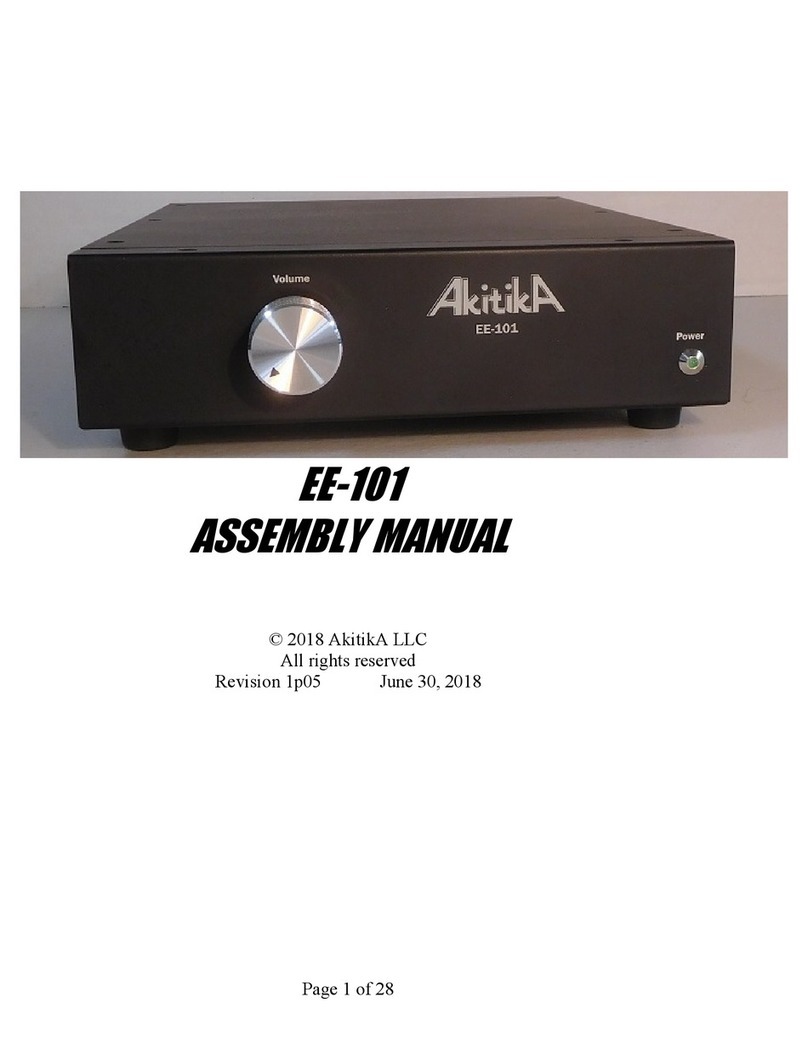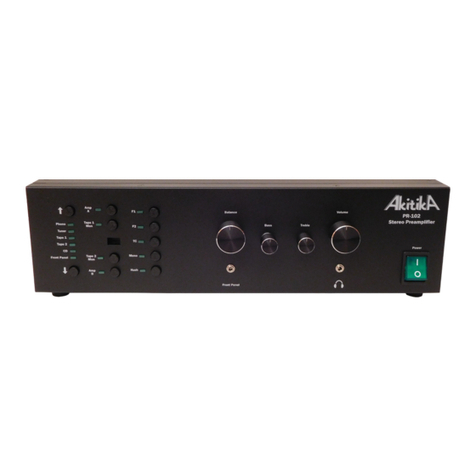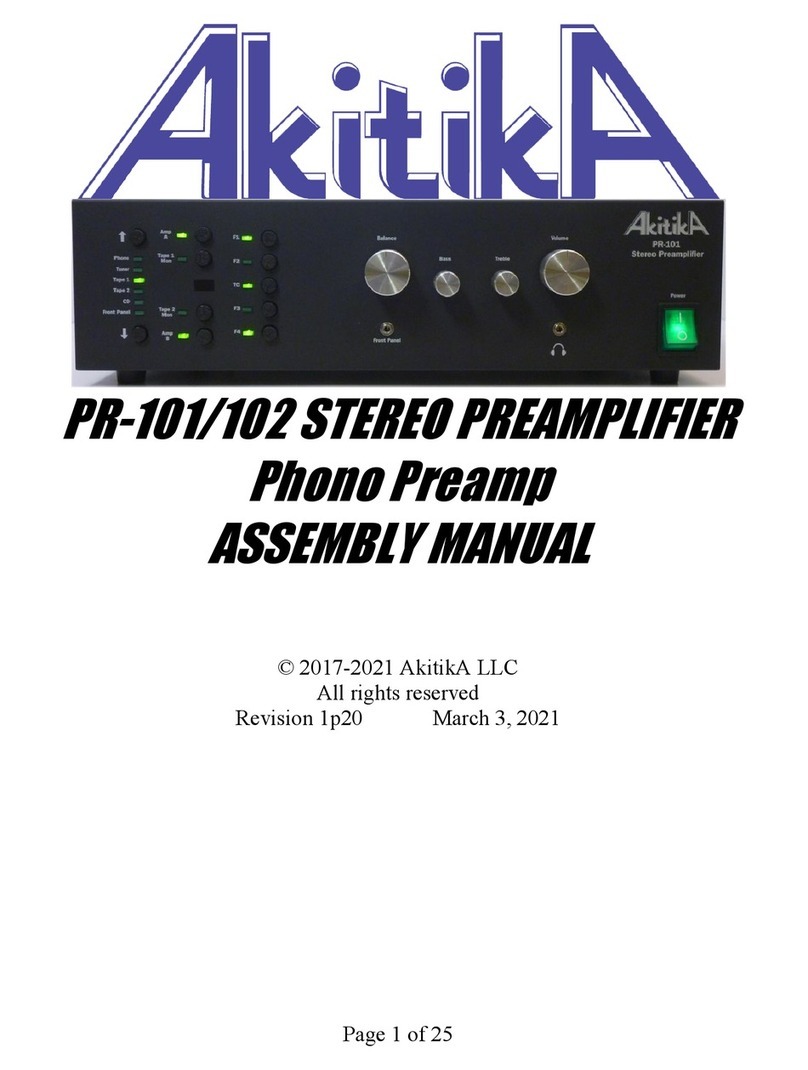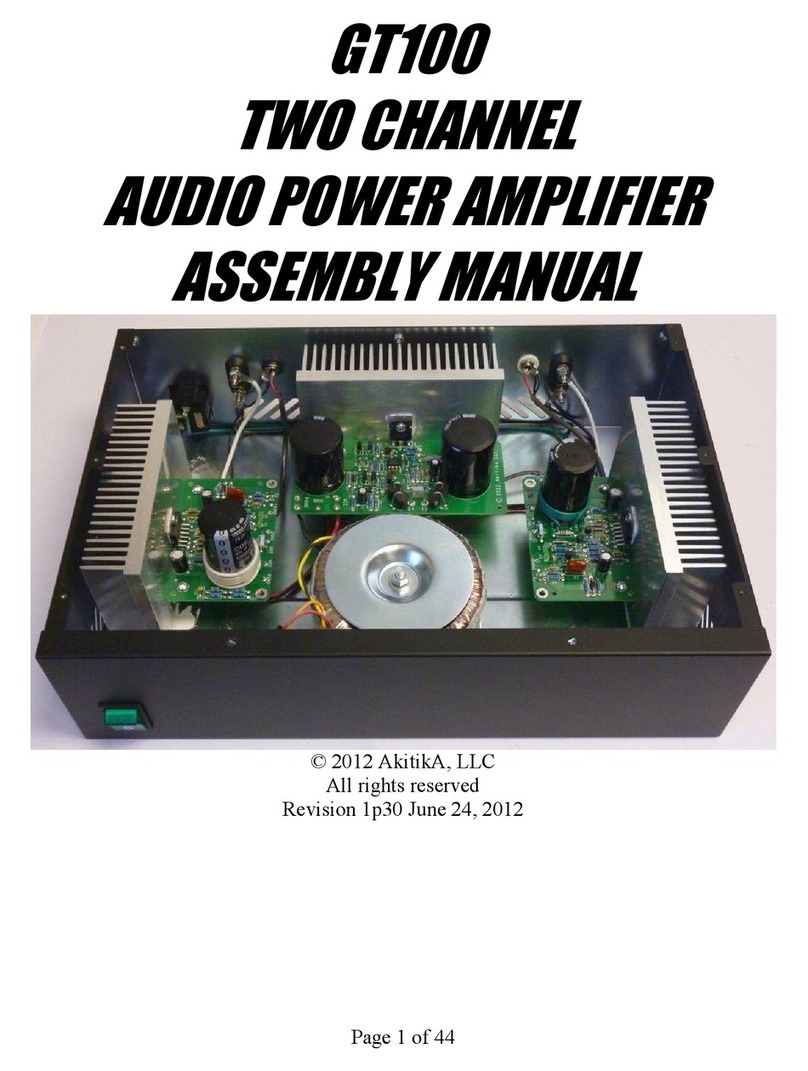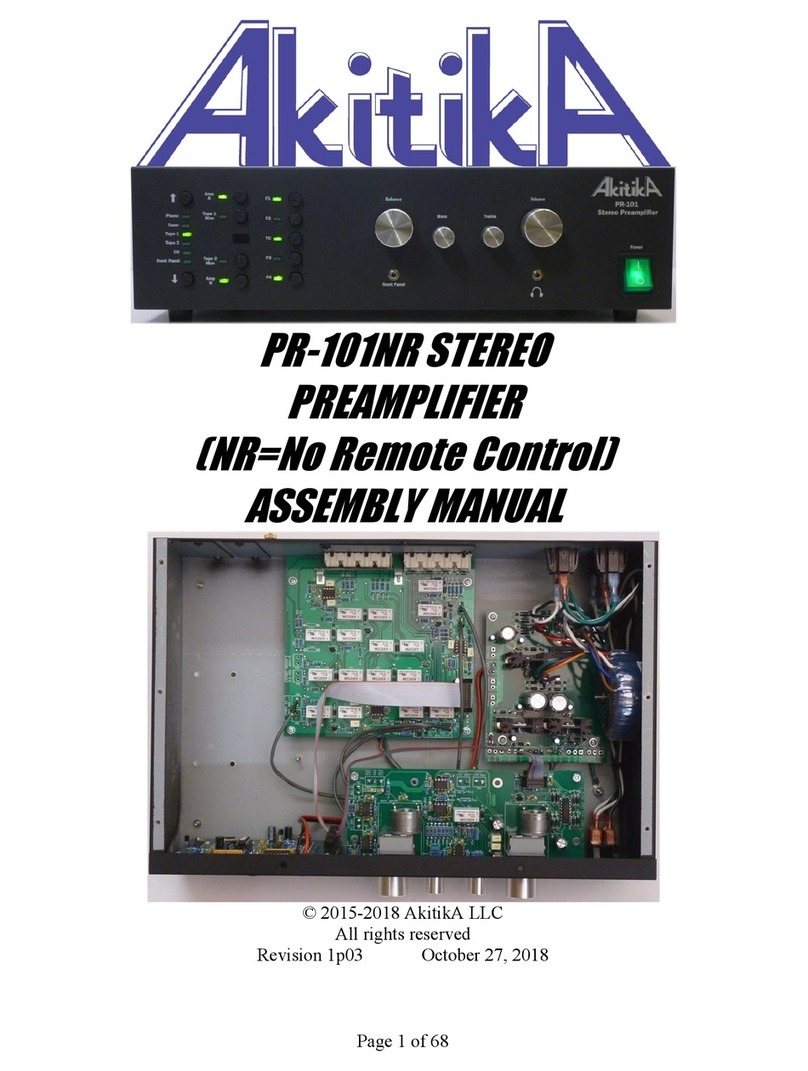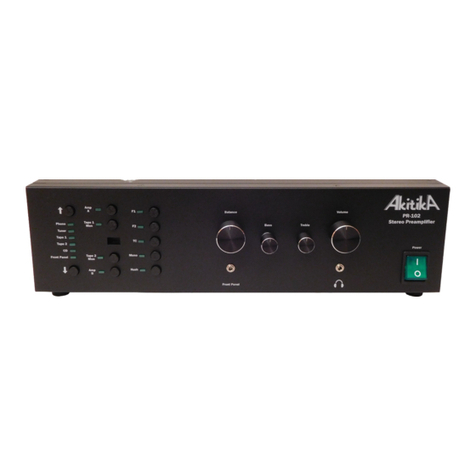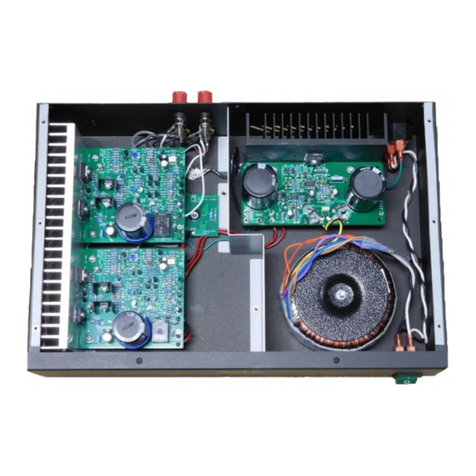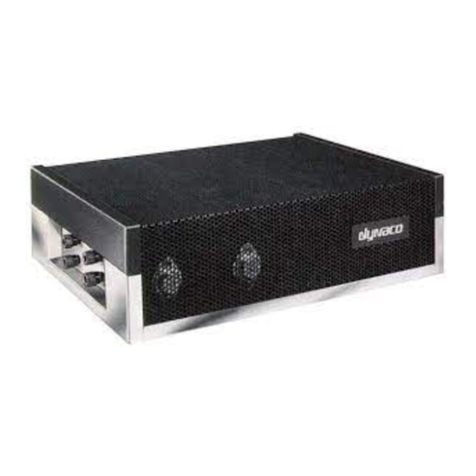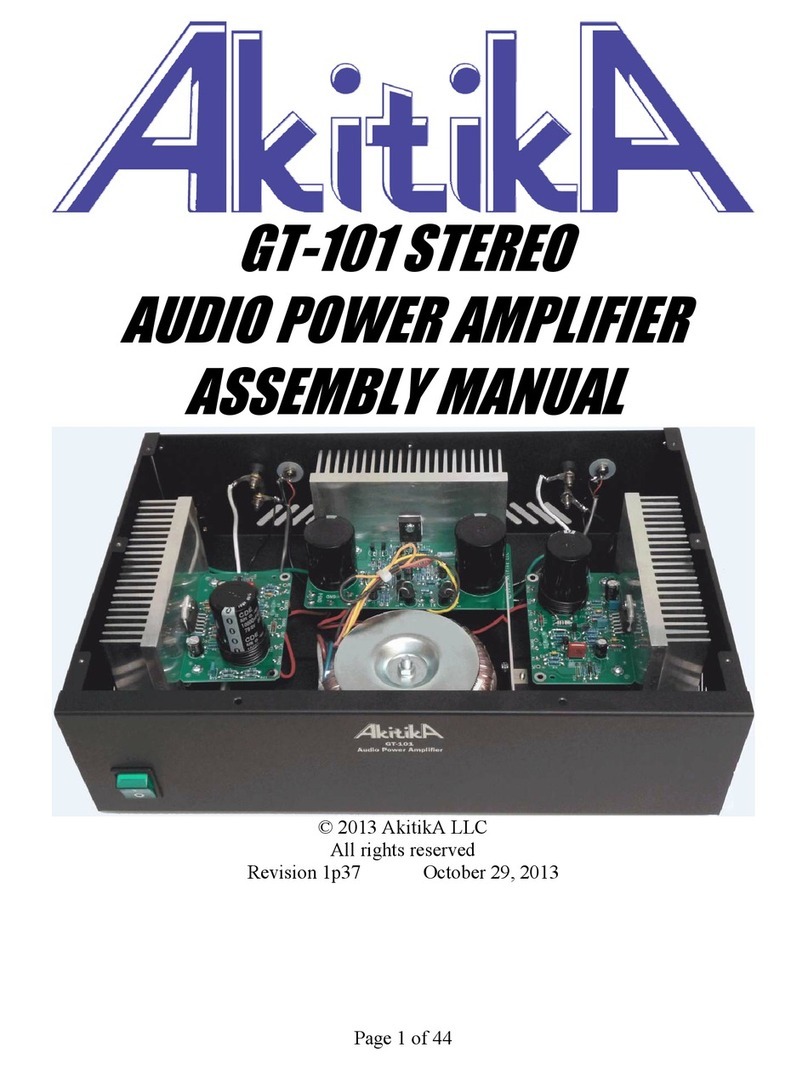
Page 4 of 56
Figure 7-Installing Q5 on the heatsink and to the PCB .................................................... 13
Figure 8-Remember to solder Q5's leads .......................................................................... 14
Figure 9-Assembled Power supply mounted on heat sink ................................................ 14
Figure 10-Empty the amplifier components into a soup bowl .......................................... 15
Figure 11-Close-up of bare Amplifier PCB ...................................................................... 15
Figure 12-Note flat side of LED package sits under number 1 and 2 in LED1 and LED2
........................................................................................................................................... 19
Figure 13-Capacitor Identification guide .......................................................................... 19
Figure 14-Vertical resistor mounting ................................................................................ 20
Figure 15-Starting to wind the output inductor................................................................. 22
Figure 16-finishing step for the output inductor ............................................................... 22
Figure 17-Spreading thermal compound on driver transistors ................................. 23
Figure 18-Do you have a 273 or a plain heatsink? ................................................... 23
Figure 19-273 style mounting (left side) and plain mounting (right side) ........................ 23
Figure 20-Installing T8 and T9 on the circuit board ......................................................... 24
Figure 21-Mounting assembled PCB to heat sink ............................................................ 25
Figure 22-mounting the PCB to the heat sink ................................................................... 26
Figure 23-Spread a thin film of thermal compound on Q4 (IRFP9140), but keep it off the
leads .................................................................................................................................. 26
Figure 24-threading the screwdriver to Q4’s mounting screw ......................................... 27
Figure 25-Q5 with 6-32x1/2" mounting screw and insulator ........................................... 27
Figure 26-first amplifier channel completed and installed ............................................... 28
Figure 27-from left to right, #6 lug, #10 lug, RCA connector ground lug ....................... 29
Figure 28-power supply with attached ground wire ......................................................... 29
Figure 29-Right and Left Channel Designations .............................................................. 30
Figure 30-shielded cable for left channel. Right channel has overall length of 11 inches.
........................................................................................................................................... 31
Figure 31-Channel Grounding Harness ............................................................................ 31
Figure 32-Install the feet here ........................................................................................... 32
Figure 33-Ground Lifter PC Board ................................................................................... 32
Figure 34-Ground Lifter PCB with ground wires connected............................................ 33
Figure 35-FASTON connector ......................................................................................... 33
Figure 36-Wiring IEC power connector line and neutral ................................................. 33
Figure 37-Power wiring with IEC connector installed into chassis .................................. 34
Figure 38-Installing power wires on the switch ................................................................ 35
Figure 39-Installing RCA jacks ........................................................................................ 35
Figure 40-Install both left and right binding posts............................................................ 36
Figure 41-I/O Connector wiring ....................................................................................... 37
Figure 42-Wiring toroidal transformer for 120 Volt operation ........................................ 39
Figure 43-Western Union splice has diameter less than the insulated wires and no sharp
points ................................................................................................................................. 40
Figure 44-connecting up the power transformer ............................................................... 40
Figure 45-Showing active and storage locations in the fuse drawer ................................ 41
Figure 46-Grounding Stud Detail ..................................................................................... 43
Figure 47-Routing the wires thru the slots in the wall ...................................................... 44
Figure 48-Toroidal Transformer Mounting ...................................................................... 44
